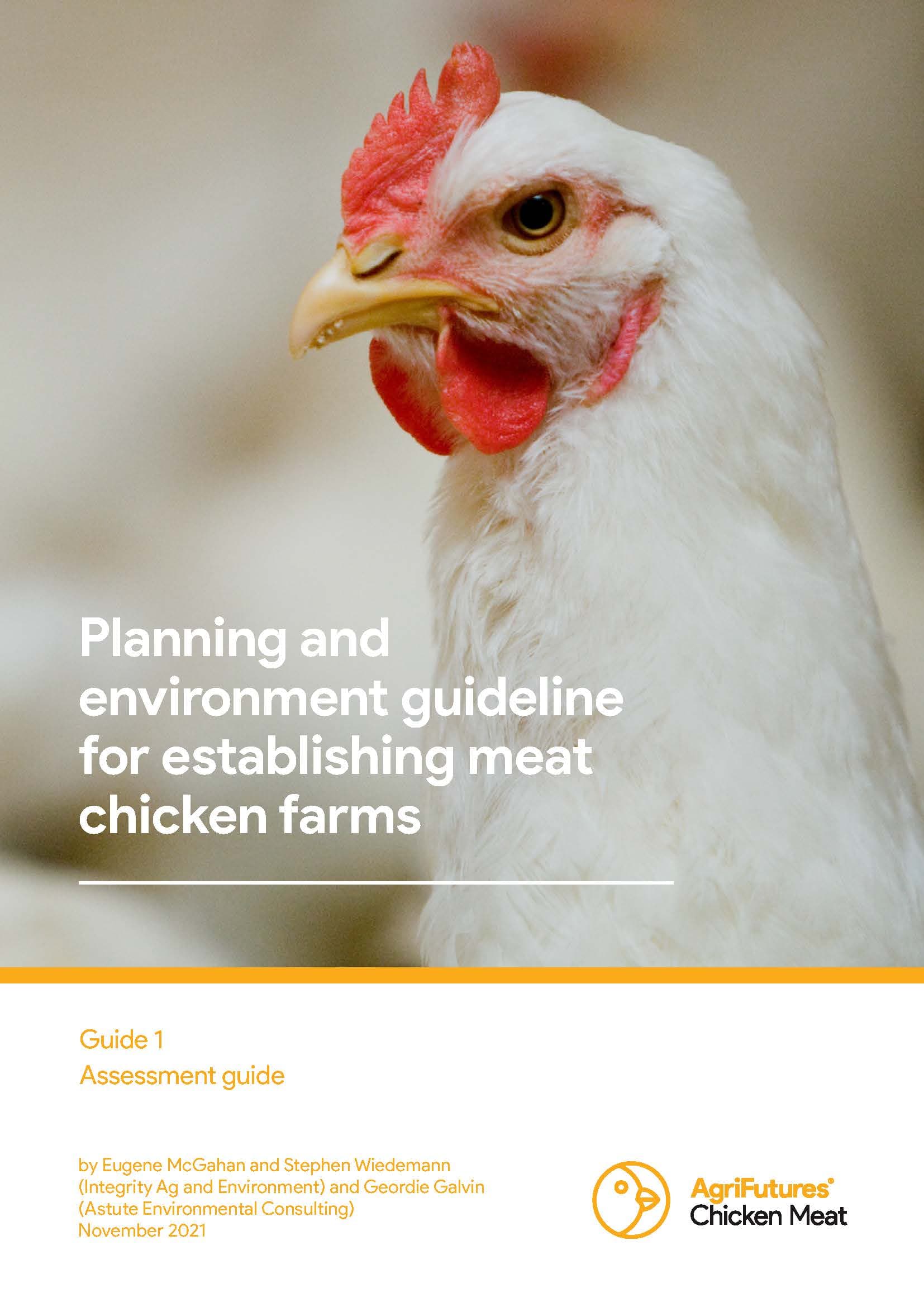AgriFutures Chicken Meat Program RD&E Snapshot
As we head into a new research, development and extension (RD&E) period for the Australian chicken meat industry (2022–2027), it is timely to reflect on...
 CHICKEN MEAT
CHICKEN MEAT 
92 pages
Published: 24 Dec 2021
Author(s): Eugene McGahan, Stephen Wiedemann, Geordie Galvin
ISBN: 978-1-76053-187-4
Download report PDF
DownloadPurchase a hard copy - AUD $60
Recent research conducted by AgriFutures Australia showed that the chicken meat industry contributes about $7.9 billion to the Australian economy and generates 58,000 jobs (Henderson, 2020), with demand for chicken meat increasing by about 3% per year. Additional shed capacity is required to meet this increased demand.
Independent research has shown that chicken meat production has the lowest greenhouse gas footprint of all intensive meat production industries (Wiedemann, 2018). Furthermore, chicken meat production uses the least water of all intensive meat production systems, a critical consideration for food security in the Australian environment.
This Planning and environment guideline for establishing meat chicken farms (Guide 1 – Assessment guide) and its companion document (Guide 2 – Applicant guide) are the first national planning and environmental guidelines developed for Australia’s chicken meat industry.
The principal aim of these guidelines is to ensure that the chicken meat industry’s ongoing economic growth upholds the principles of environmentally sustainable and socially responsible development. This will be achieved by ensuring that future meat chicken farms are located, designed and managed sustainably and provide confidence for ongoing industry investment. The outcome is anticipated to be positive community-industry and government-industry relationships.
These guidelines incorporate the latest research and innovation (both national and international). They have been developed through an extensive review of state environmental requirements and application guidance for meat chicken farms and other intensive animal industries. These guidelines were developed in collaboration and consultation with researchers and industry experts, as well as local government and state departments of planning, environment, primary industries, and agriculture.